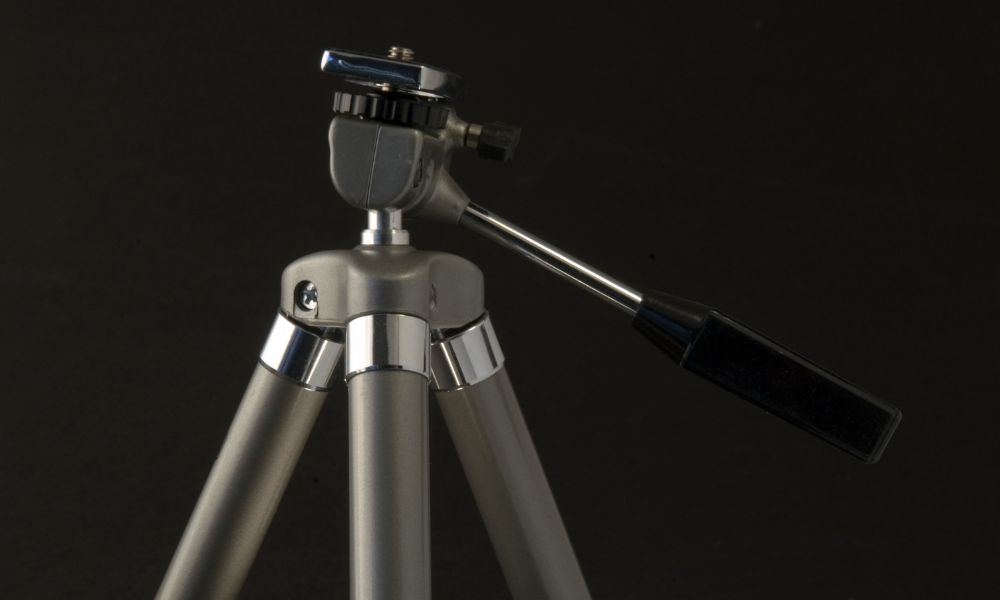
Setting up a shot involves a lot of moving parts, from lighting and set prep to subject placement and sound hookups. However, one of the most important factors of a production set is camera placement.
Where and how you place the camera affects the quality of your shot, the focus, the angles you record, mobility ease, and equipment safety. Learn different ways to use a tripod like a professional to make sure you set yourself up with ideal filming conditions before you get rolling.
Go Wide for Stability
Camera stability influences the shakiness of your footage and the safety and balance of your camera. Tripods provide you with a secure foundation that supports both forms of stability. Although the odd number of legs seems shaky, when used properly, the tripod provides you with one of the most reliable and stable bases to film on.
Spread your tripod’s legs out wide to balance out your film camera’s center of gravity. This reduces the risk of tipping. It also ensures no slight movements or external factors—strong wind, the wakes of jumps, or other onscreen and offscreen movements—jolt the stability and placement of your shot.
Face One Leg Forward
Many people find that three tripod legs spread out to full capacity make it awkward to maneuver around the camera. Positioning your tripod with one leg facing forward creates an opening in the back for you to get close to the camera without obstructions or awkward legs poking in between.
Pro Tip: When filming outdoors and on declines, putting two legs on the downhill provides more stability.
Make Use of the Hook
Tripod hooks further enhance stability. They allow you to hang weights to anchor down your tripod and camera. Like spreading the tripod legs out wide, hanging a weight on the hook reduces many risk factors, from tipping to residual impacts from movements around the camera. Tripod hooks also come in handy when organizing wires and storing bags while shooting in out-of-studio locations.
Scout Shots Before Setup
Every set offers multiple shot perspectives to explore, changing what you capture of your subject, backdrop, and lighting situation. Before placing down your camera and strapping it into the tripod, scout out different shots and angles before committing to one.
Pro Tip: Consider the tilt and pan radius of your tripod—or camera—when scouting different shots.
Invest in a Quality Tripod
Along with some best practices, the type of tripod you use also affects the professionalism of your video production and tripod use. Investing in a professional video tripod gives you a reliable and quality stand for your recording device. It elevates the quality of your shoot with better functional properties, durability, enhanced stability, and secure mechanics and structures to safely hold up your camera.
Implement these five ways to use a tripod like a professional and guarantee better filming conditions and results.
